The answer is to which illumination color is right for you will always come down to personal preference.
But with all things optics, there is science behind the red or green selections. I’ll go even deeper into explaining which color could be superior for specific applications. Red dot VS green dot comparisons are also provided.
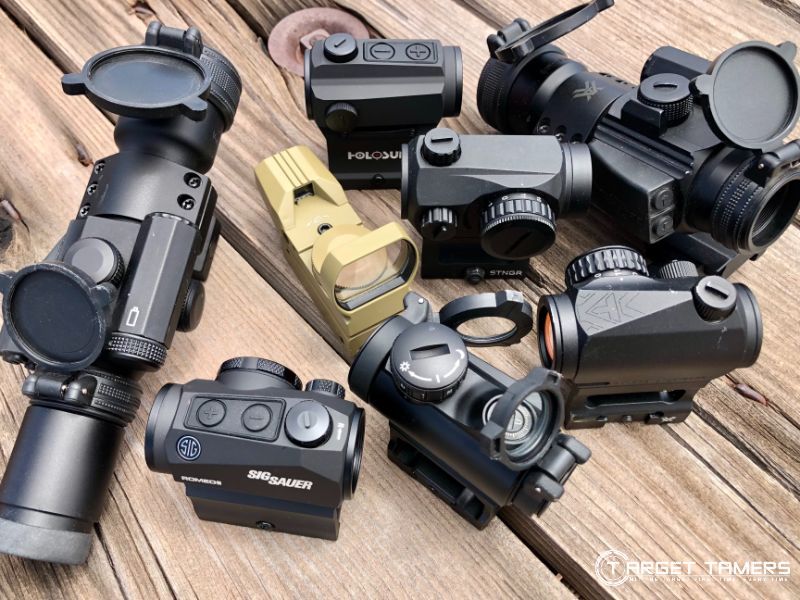
In general, eye physiology doesn’t lie, and it presents a case that is far more biased to green dot illumination versus red dot illumination. However, there are many factors that affects how that dot is seen and why green or red could be suitable for one shooter but not necessarily for the next.
But before we jump into the heart of the matter, here’s a friendly reminder that “red dot sights” is a catch-all term for reflex and prismatic sights and not necessarily the color of the dot. Holographic sights are sometimes included in this catch-all term but is a category of its own (read our holographic versus red dot sight comparison here).
When it comes to illumination and the debate between red dot vs green dots, the following question is relevant between all types of sights – which is better?
Is a Red Dot or Green Dot Better?
Personal preference, habits, visual acuity, application, and experience will determine whether a red dot or green dot is best for you. Keep in mind that what is seen by you may not be the same as what someone else sees.
For this reason, though a winning color is determined after each category, it’s not the final word. Even so, the information below is quite insightful.
1. Visibility
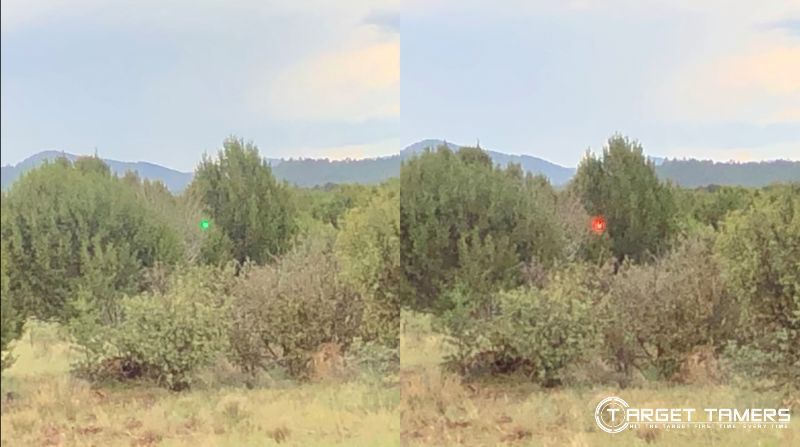
Brief biology according to the American Academy of Ophthalmology: the eye has around 120 million rods and 6 million cones. Rods are sensitive to light levels and provide us with vision in low light. Cones provide our color vision.
Our human cone cells are categorized by three types: red-sensing (60%), green-sensing (30%), and blue-sensing (10%). Though the cones are labeled by color, it does injustice to their sensitivity abilities to the actual visible light spectrum.
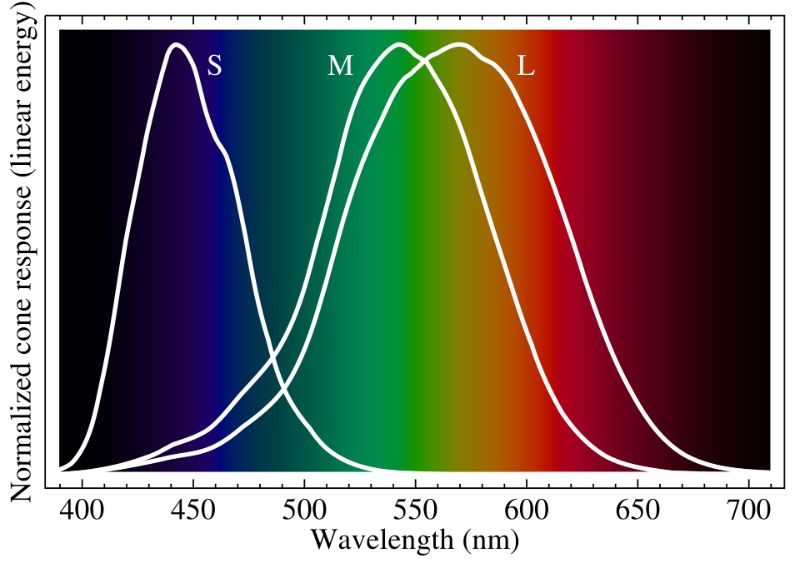
Essentially, the cones are sensitive to different wavelengths of visible light. The red-sensing cones are sensitive to long wavelengths that cover from mid-green to almost the infrared spectrum.
The green-sensing cones are sensitive to medium wavelengths that cover the deeper shades of green to the orange-red spectrum. The peaks between the red-sensing and green-sensing cones covers a lot of the green spectrum.
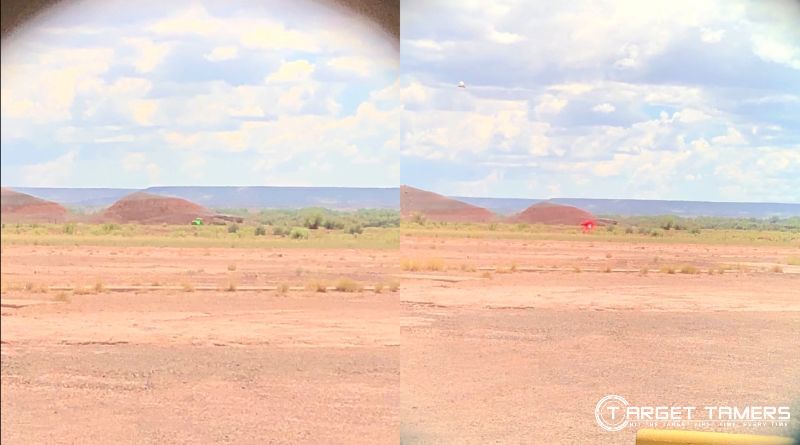
Overall, we see green better than any other color in depth, brightness, and sharpness although red is the oft-seen illumination color of choice in many red dot sights and riflescopes. We will get to the “why red then?” later.
For this category, green is highly visible to the human eye in daylight and is why it wins in the visibility race.
Winner: Green Dot
2. Refractive Eye Conditions
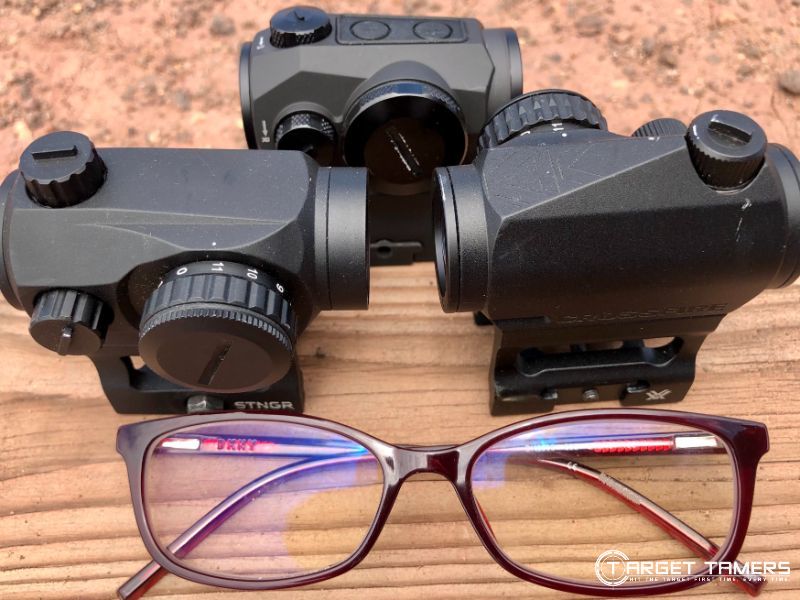
Common refractive conditions of the eye are myopia (near-sightedness), hyperopia (far-sightedness), presbyopia, and astigmatism.
Though astigmatism is often said to be the cause of dot anomalies when using red dot sights, any of the refractive conditions can produce similar dot distortion.
The type of anomalies usually seen are excessive star bursting, dot clusters, more than one dot, dot with a tail (comet or smudge), etc. More of these problems are seen in reflex sights with red illumination mostly due to how a reflex sight is made and where that light focuses in the eye.
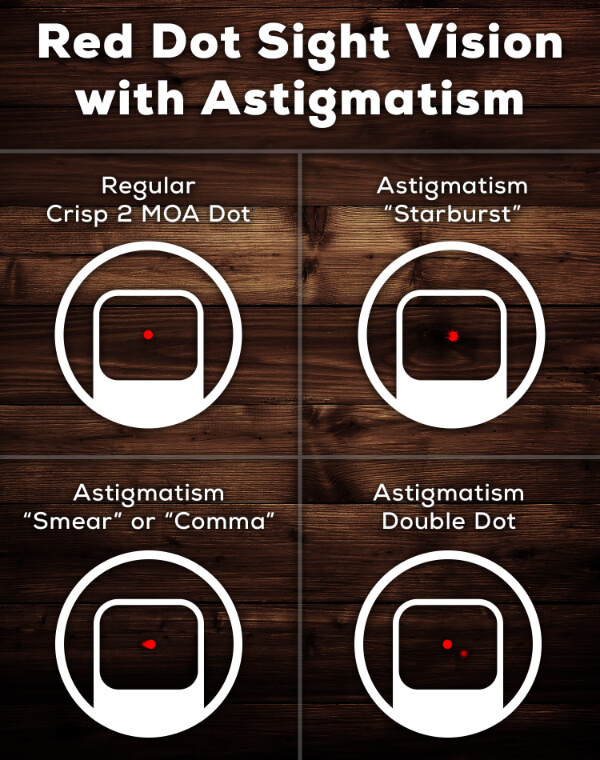
Furthermore, everyone’s degree of error will be different and so the experience with dot shape, color, and brightness will be different. Some troubleshooting methods are provided below.
- Keep your contacts or glasses on to correct for dot anomalies.
- Turn the illumination (brightness) down to where the dot anomaly is no longer distracting.
- Put a magnifier behind the red dot sight. Use the diopter to acquire a sharp dot/reticle.
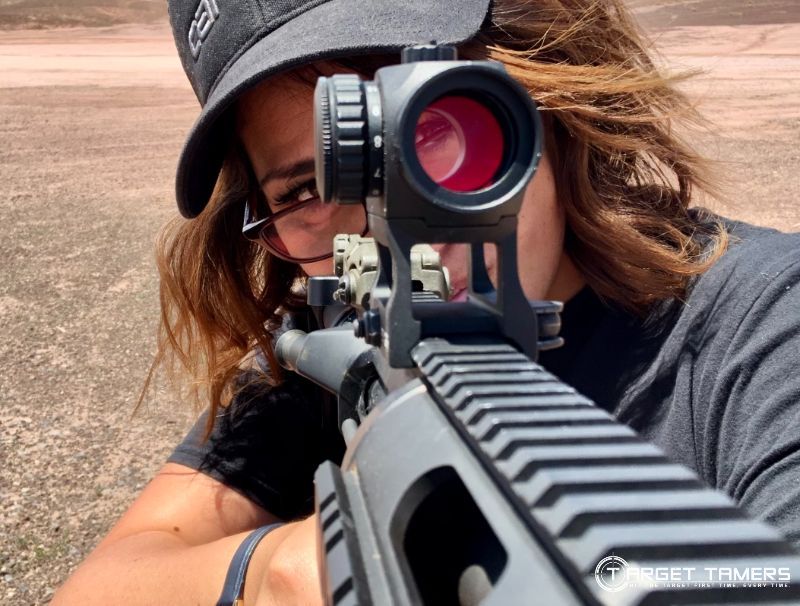
Beyond this, the usual advice is to consider a prismatic sight.
How does a prismatic sight work? Unlike relying on the reflection of an LED dot, a prism sight uses a prism to focus light and therefore the image and reticle to your eyes. Most importantly, it has an adjustable eyepiece (diopter) to correct for some refractive conditions.

More on astigmatism and red dot sights is outlined here.
When it comes to color, it’s more or less related to the eye’s ability to see green in greater depth, vibrance, and clarity versus red. Green seems to be the color of choice for those with refractive error conditions.
Winner: Green Dot
3. Hunting

According to a scientific essay quoting an entry by Faughn and Serway, the human eye’s greatest sensitivity is at the 560 wavelength, i.e., yellow-green. During daylight conditions, the pupils constrict though the cones adapt rapidly to changing light conditions.
As a result, green remains easier to see and reduces eye fatigue and stress. If you’re hunting mostly under daylight conditions and seeing a fast-to-acquire, bright dot is of utmost importance, the green illumination would serve you well. It would also allow you to focus better and longer in the hunt as well as being suitable for those with visual acuity issues.
However, in dim and low light – often the conditions of the Golden Hours - you’d want to reduce illumination brightness to prevent washout of the target and FOV. In this case, the perceivable, intensified brightness of a green dot over a red dot is less important as the dimmer settings are favorable in these conditions.
Red stands out very well against dark targets and the terrain. With little available light, the pupils dilate to allow more light in and red illumination will do little to ruin your low light adaption and peripheral vision.
Winner: Tie
4. Target Shooting
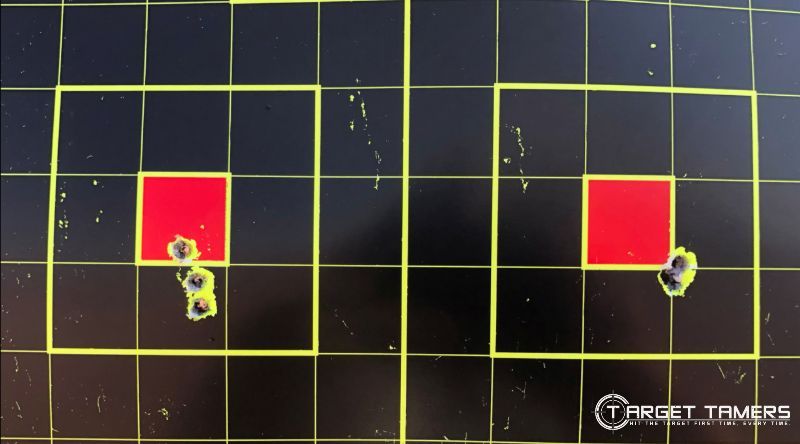
Green or red dot illumination is suitable for target shooting on white paper, black shoot ‘n see, and steel targets. Though science may play a huge part in what color is seen faster and easier, it may very well come down to user experience and habits.
Many shooters who have grown accustomed to red illumination over the years may find it difficult to switch over to green. The brain wants to look for a red dot but must be reminded that you’re using a green dot. This affects speed. On the other hand, green is unique enough that it may stand out making for fast work of the sight.
You can perform timed tests between the two colors to see which one you’re faster with. On paper, the green color would be brighter and easier to see helping to improve speed, but anecdotally, some eyes just work easier with red.
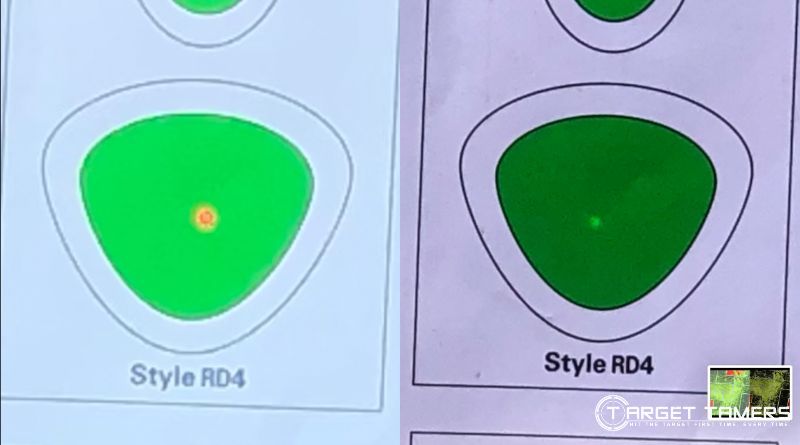
I’ve experienced the red dot washing out on orange targets and the green dot just a tad harder to pick up on yellow targets.
Either way, on something like an LPVO where the reticle is glass-etched, switching off illumination for a black reticle quickly fixes the issue. With a reflex sight, you don’t have that option. If you want some more information about LPVO's vs red dot sights, check out this article.
Are you in search of a new LPVO for your system and curious about the performance of the Swampfox Tomahawk II? Explore our article for an in-depth review.
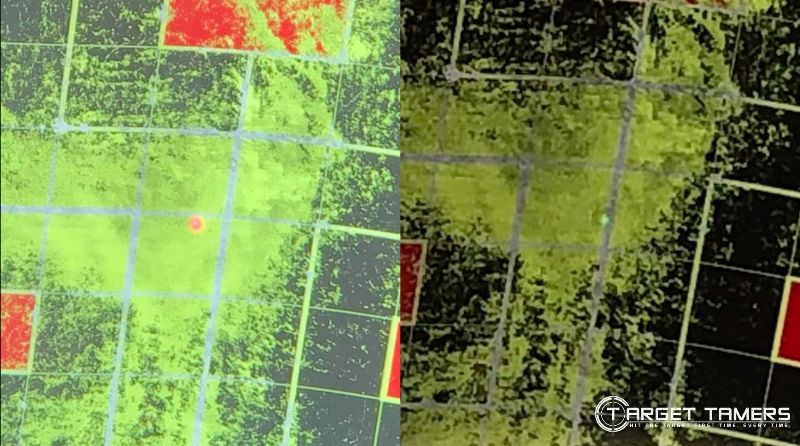
This is an application that provides a great example of how user preference and experience will determine what color illumination is right for the user.
After all the physiology discussion between green and red illumination, the fact remains that old habits are hard to break, and new ones are hard to stick to.
Winner: Tie
5. Law Enforcement

In general, even when green illumination became a viable option, red was more affordable to fit law enforcement budgets and the battery life is longer. Though red is still a standard illumination color, green is quickly becoming a popular alternative.
The green illumination in red dot sights for professional applications may be popular for more reasons that can be fathomed here. One possible reason is that it’s highly visible in circumstances where a red dot can get lost in the expanse of taillights and patrol car light bars.
Other possible reasons may come down to the LEO’s visual acuity and the psychological color difference if a red laser is also mounted to the duty weapon.
Winner: Green Dot
6. Night Vision
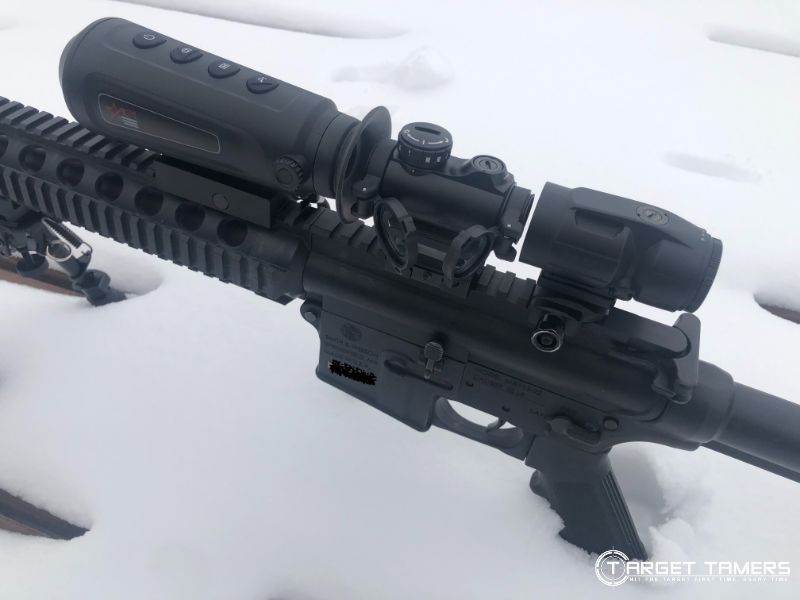
A green phosphorus display had been the standard for night vision devices for a long time. There’s a lot behind why green was used, but to abridge the explanation of whether a green or red dot will better with night vision, it’s red.
Firstly, red will stand out more against a green display. Though green could be doable, you’d need to be precise about the display settings to ensure dot visibility. You could adapt to either a green or red dot if the NVD has a white phosphorus display (monochrome).
Secondly, the red illumination is better at preserving your natural low/dim light and night vision. It takes a lot of energy and light for red (long wavelengths) to activate the rods in your retina.
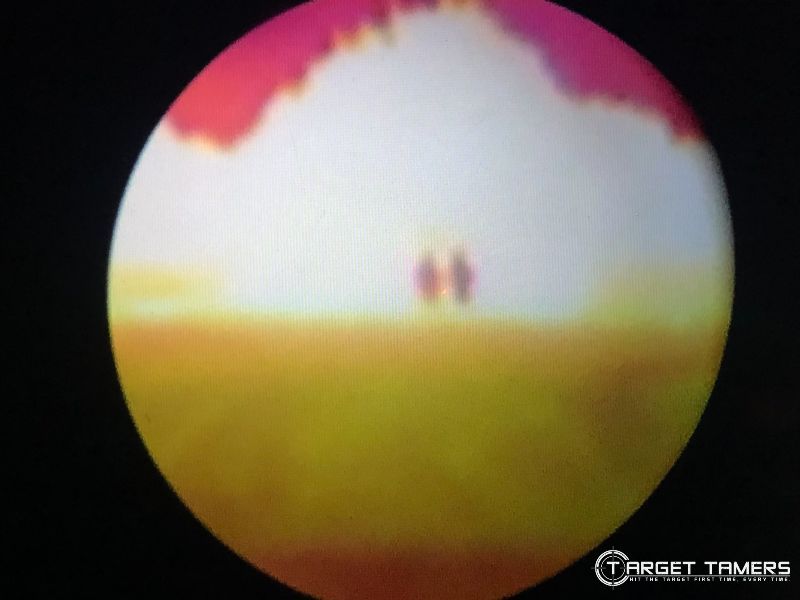
While the rods are responsible for our night and peripheral vision, they are much more sensitive to light, more so the medium wavelengths (green) than long wavelengths (red). But when green is used, it should be at a low intensity, and green does provide more clarity and detail than red.
A too bright night vision display can be enough to ruin night vision acuity too. Red is the accepted illumination for night vision based on its low intensity and low risk to activate the rods in our eyes. It helps to preserve night vision acuity, and it stands out a lot better than a green-on-green display. Red illumination is the color of choice.
Winner: Red Dot
7. AR-15 & Pistol
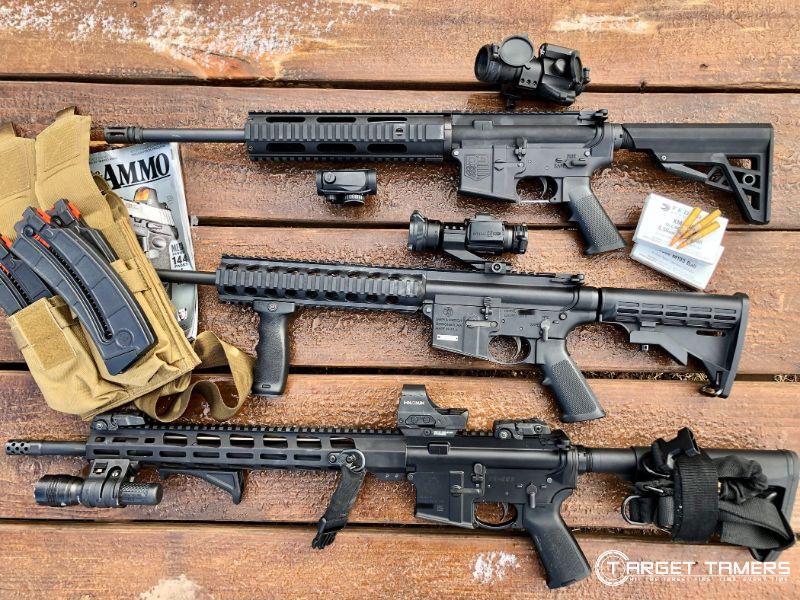
There is an inherent, germane relationship between red dot sights and AR-15 rifles. However, the perception that red dot sights on a handgun is a new thing would be a wrong one. Red dots have been rigged to pistols for over 40 years. What is modern is the debate of a red dot or a green dot.
If it’s purely about eye physiology to improve speed, target acquisition, and visibility, a green dot for the AR-15 or pistol is the way to go. However, other considerations must be assessed such as application.
Narrowing down how and when the sight will be used will help to determine which color, its consequences, and advantages are best for the job.
Green does exceptionally well for speed and visibility in bright conditions, but the battery life of a red dot especially with motion sensor technology for continuous-on benefits are invaluable to a duty officer or on a home defense gun.
Again, personal preference and external considerations will determine what the best red dot color is for you and your setup.
Winner: Tie
8. Battery Life
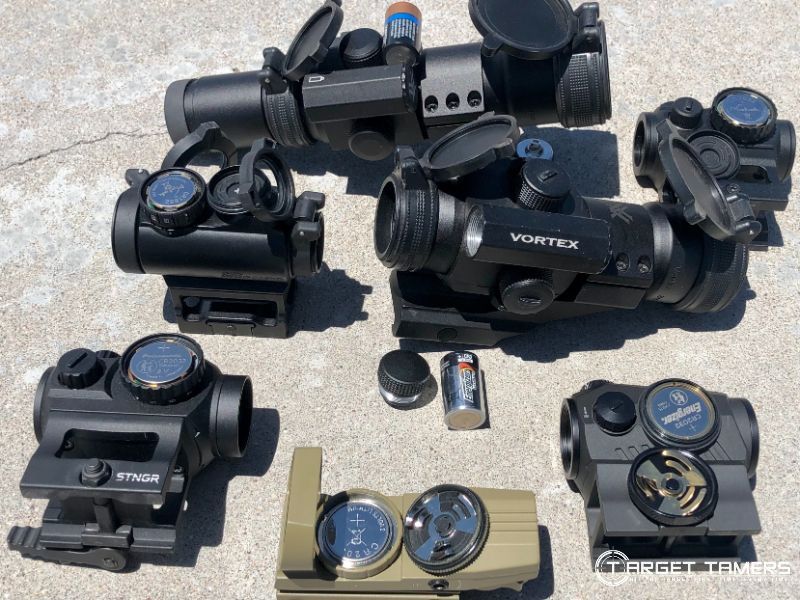
Overall, long wavelengths have lower energy levels and thus batteries can go a lot further with red illumination.
Medium wavelengths like green have more energy than red and thus requires more from batteries.
Human eyes see red well and with a longer lasting battery life, it’s a win-win.

Well, it’s a win-win for most as other factors such as color perception is not the same for everyone. But back on point, a very tangible difference between red and green dot sights is the battery life.
Red dot sights can have a battery lifetime of 50,000+ hours while a green dot sight may only provide a 1,000-hour runtime.
It could be argued that green dots may prove to be long-lasting given that they don’t have to be run as high in illumination intensity to acquire the same level of brightness from red illumination. This is because green is perceived by the human eyes as brighter and sharper than red.
Since advancements in optics and battery technology is continually forging ahead, some manufacturers are tinkering to narrow the gap between battery life and illumination color. It may come down to how LEDs have evolved over the last 30 years. The gap between cost is also narrowing.
However, it’s hard to argue the math. Even if you’re running the green dot on low intensity and can maybe get a 1-year battery to run longer than that, it’s still unimpressive versus the 5-year battery on mid-range intensity on a red dot.
It still requires some researching and shopping to see how red vs green dots stack up against each other.
| RED DOTS | GREEN DOTS | ||
|---|---|---|---|
| Product | Battery Life (Approx.) | Product | Battery Life (Approx.) |
| Holosun HS403B | 50,000 hours | Holosun HE403B-GR | 50,000 hours |
| EOTech EXPS2 | 1,000 hours | EOTech EXPS2 | 600 hours |
| Trijicon MRO 1x25 | 5 years | Trijicon MRO 1x25 | 1 year |
| Swampfox Liberty | 1 year | Swampfox Liberty | 1 year |
| Sig Sauer Romeo MSR | 20,000 hours | Sig Sauer Romeo MSR | 20,000 hours |
Winner: Red Dot
9. Cost
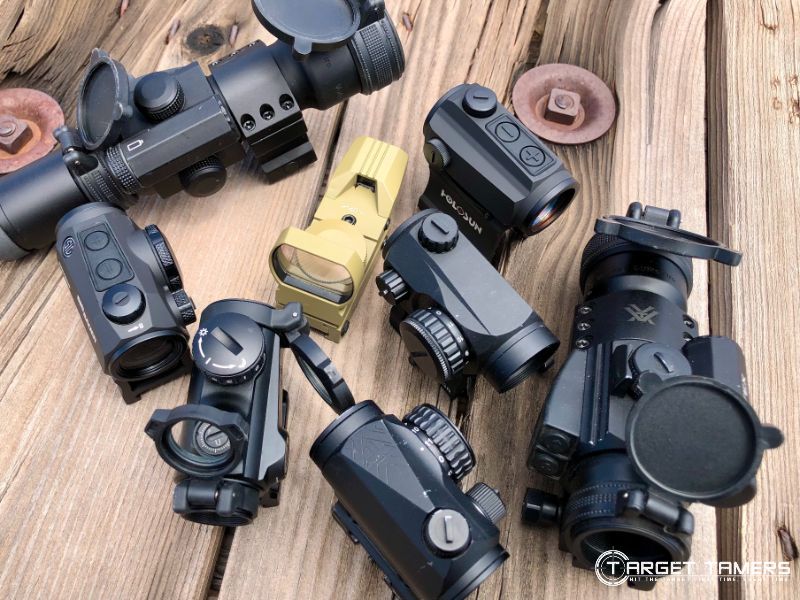
In general, the trend shows that green dot sights are more expensive than red dot sights. This is not always true across the board, but it is a strong trend. As to why, the hand-me-down, acceptable answer has been narrowed down to batteries and LEDs as the cause.
Green illumination requires more power than red illumination and green LEDs saw little progress until around the 1990’s. As LED and battery technology continues to develop in leaps and bounds, it’s only a matter of time before availability, accessibility, and affordability catches up to benefit the consumer market.
The gist of it is, red dot sights are generally cheaper than green dot sights even if it’s by an insignificant amount.
| RED DOTS | GREEN DOTS | ||
|---|---|---|---|
| Product | Price Range (MSRP.) | Product | Price Range (MSRP.) |
| Holosun HS403B | $206 | Holosun HE403B-GR | $224 |
| EOTech EXPS2 | $659 | EOTech EXPS2 | $769 |
| Trijicon MRO 1x25 | $596 | Trijicon MRO 1x25 | $631 |
| Swampfox Liberty | $229 | Swampfox Liberty | $229 |
| Sig Sauer Romeo MSR | $110 | Sig Sauer Romeo MSR | $110 |
Winner: Red Dot
Red Dot VS Green Dot: Pros & Cons
Red Dot Pros & Cons
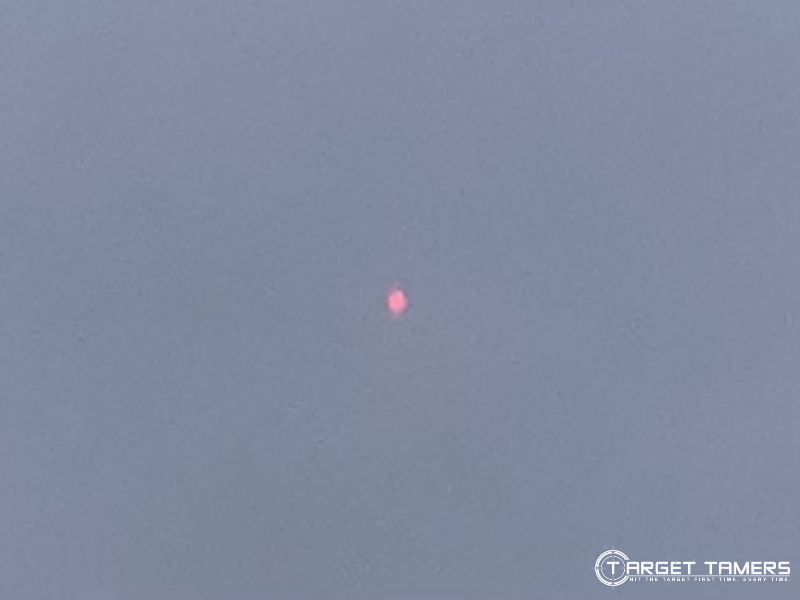
Pros:
- Cheaper than green
- Longer lasting battery life
- Suitable for use with NV
- Suitable for lowlight use
Cons:
- May need to operate at higher brightness settings
- Dot can be distorted with refractive error conditions
Green Dot Pros & Cons
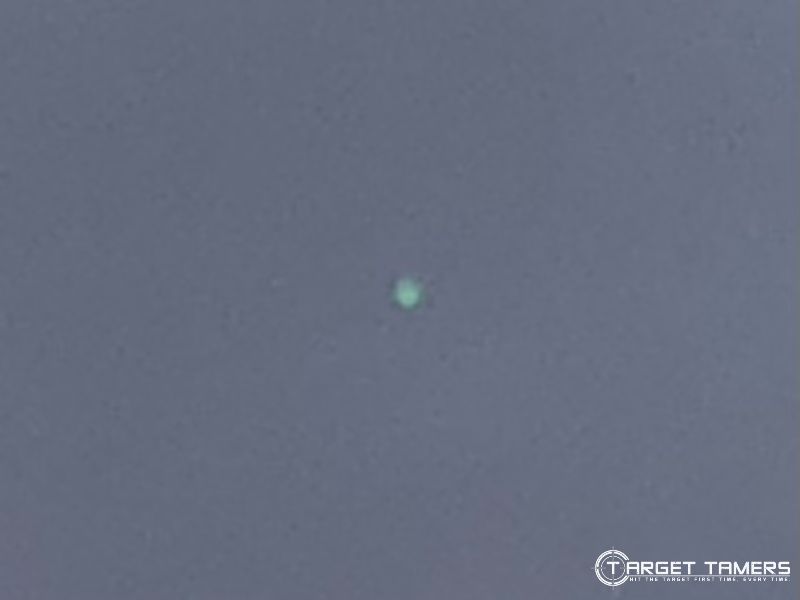
Pros:
- High visibility
- Great for daylight conditions
- Less eye strain and fatigue
- Can operate at lower brightness settings
- Can be suitable for refractive error conditions
Cons:
- More expensive
- Reduced battery runtime
What’s the Best Red Dot Sight Color?
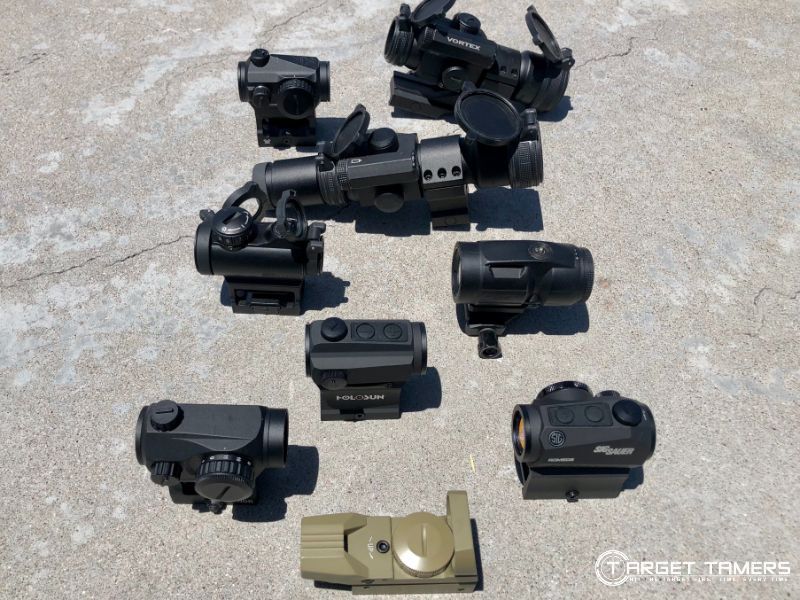
On paper, green illumination has a strong case to be the best reflex sight dot color. However, visual acuity experience is far from universal. Overall, a lot of biology, habits, and experiences will lean the shooter towards one way or the other – red dot or green dot.
According to a study, 1 in 12 women have a fourth cone in the retina. Of those, even fewer function with actual tetrachromatic color vision. It makes me wonder how they see green compared to what I think is green…
Though no one color may be perfect, there are things you can do to improve dot visibility though there may be compromises you’ll have to learn to live with.
If nothing can be done to improve dot color or quality - hey, it might just be a defective sight and nothing to do with you at all!
Explore the comprehensive insights into the accuracy of red dot sights, understanding their effectiveness in improving shooting precision, target acquisition speed, and overall performance in various shooting scenarios.
Further Reading




Another thorough examination by Tina. Nicely done.
Thanks for your kind feedback Bruce!
Thank’s Tina for your very comprehensive red dot v green dot comparison. It‘s open my eyes to the green dot, which to be honest, I have never considered.
Cheers, Brett
Hi Brett, I'm glad you liked it. I personally favor red illumination out of habit, but it sure is fun to switch it up sometimes just because I can! Thanks for your comment.
Allow me to inject a contrarian view here. The fallacy this author (and so many others) makes is in touting the visibility of green as a positive. In reality, what a shooter’s eye is most focused on is the target. The dot is secondary. Try looking at a red dot side-by-side with a green dot and you’ll notice your eyes “light-up” at the green, whereas it will remain neutral with the red. It’s like saying to look into the sun, or into a flashlight’s beam because it’s brighter…
As a shooter, you want your eyes 100% focused on the target, without getting them “excited” and overexposed or distracted by a bright dot. It’s akin to using blacked out iron sights, and why Aimpoint has never bothered with a green dot. It’s a gimmick that only inexperienced civilians fall for.
We can't equalize visual acuity with red dot sight utilization, how everyone sees and interprets color, or how they will be using it but I do see your points. Thanks for sharing your opinion.